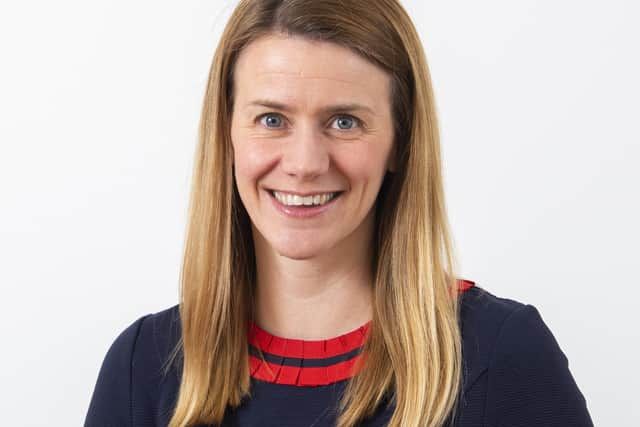We all want to make a connection - Sarah Eynon


It won’t shock many to know that in a survey carried out by estate agency Purple Bricks in 2021, 41 per cent of house buyers ranked fast internet speed at their new home as an important priority – that’s higher up the list than being close to the local school.
How times have changed. Our reliance on having an online presence is now at an all-time high, with demand for connectivity coming from all aspects of our lives.
Advertisement
Hide AdAdvertisement
Hide AdThere has been a rapid expansion in Scotland’s telecoms network since 2020, with the highest year-on-year increase of homes receiving full fibre broadband. But where does good mobile reception feature in this equation?


We need more mobile networks because we are more mobile. We expect access to the internet and be able to use our apps and communicate with others no matter where we are.
For the everyday consumer, mobile and fibre are very alike, with the same capabilities and restrictions. The key difference is that with mobile coverage you’re not tied to a certain radius from your WiFi router – you can do the same activities wherever you are.
Good flexible coverage that lets you do the same thing wherever you are should be the aim. This is the potential of the much talked about 5G transformation – to create seamless connectivity. Instead of just replacing or adding to the capabilities of previous ‘Gs’, 5G will integrate existing wireless technologies such as 4G, WiFi and the Internet of Things.
Mobile deployment is, however, a challenge – whether it’s funded by the private sector or through public sector programmes such as Scottish Government’s 4G infill programme. Mobile deployment requires a power supply, ubiquitous fibre and in some cases planning permission. Scottish Government’s R100 programme will play a key role in this, delivering fibre to the most remote areas of the country, including 15 subsea cables to the islands.
It also requires willing partners with assets to put masts and digital equipment on. Local authorities are those often forgotten about, but essential partners. They own large swathes of land, public buildings and street assets across the whole of Scotland; they are also the gatekeepers of the planning system; and they are the potential end-users of the improved connectivity that the new mobile networks can support.
To help both parties, Infralink was established. Funded by Scottish Government via the Scotland 5G Centre and delivered by us, the Scottish Futures Trust, Infralink is helping deliver some of the aims of Scottish Government’s 5G Strategy, Digital Strategy and National Strategy for Economic Transformation.
Infralink provides the commercial starting point for local authorities to have a positive impact on mobile roll-out across Scotland. It helps put the terms local authorities are willing to start from on the table to allow meaningful discussions take place with mobile network operators about the use of their assets to host mobile technology.
Advertisement
Hide AdAdvertisement
Hide AdEarlier this year, Infralink was selected as one of eight UK pilot projects announced by UK Government to explore how street furniture (such as streetlights and CCTV cameras) can be mapped out on an online platform for mobile network operators to use to install their digital equipment.
With funding also from Scottish Government, Infralink-Exchange as it will be known, will work across the Tay Cities region (Angus Council, Dundee City Council, Fife Council and Perth and Kinross Council) to run the pilot. And when operational it will attract the mobile industry to work with these local authorities and invest in improved mobile coverage for the benefits of communities across the region.
While location, location, location will always be the mantra for house buying, it may not be too long before we see estate agents adding ‘best full-service connectivity’ to their property sales brochures.
Sarah Eynon, Associate Director in the Scottish Futures Trust’s, Digital Infrastructure team
Comments
Want to join the conversation? Please or to comment on this article.